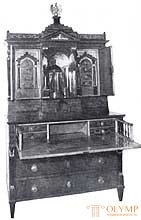
Empire, or "Empire Style" (French Empire - Empire from the Latin. Imperium - command, power) - historical artistic style, first established in France at the beginning of the XIX century, during the First Empire of Napoleon Bonaparte. The chronological framework of the original French Empire Style is narrow; they are limited, on the one hand, by the end of the Directorate of the Directory (1799; see Directoire Style) or the year of Napoleon's coronation (1804), and on the other, by the beginning of the restoration of the Bourbons (1814-1815). 
However, in such a short historical period, French Neoclassicism, which grew out of the natural interest in antiquity and was reinforced by the ideas of the Enlightenment, the civil ideals of the beginning of the revolution, managed to degenerate into a cold, pompous, pompous, artificially implanted imperial power style. 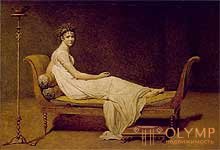 Its main elements, gleaned from ancient art, were already contained in the Classicism of the “Louis XVI style” and were crystallized in the “Directory style”.
Its main elements, gleaned from ancient art, were already contained in the Classicism of the “Louis XVI style” and were crystallized in the “Directory style”.
However, Empire style is fundamentally different from Classicism. The soft and light harmony of art from the period of Louis XVI and the democratic rigor of the style of the Directoire were replaced by ceremonial pathos and theatrical magnificence of the “Style of the First Empire”. Napoleon sought to shine and aura of glory of the Roman emperors. If free-flowing classicism was focused on democratic Athens from the period of the classic of the Age of Pericles, then the artists of the French Empire were strictly required to take the forms of art of ancient Rome as a model.  This significant difference is not always given due importance when they talk about the continuity of styles and the "Empire style as the highest stage of development of classicism." Such a statement is equivalent to as if we said that the art of ancient Rome is the highest stage of the art of Greek Athens.
This significant difference is not always given due importance when they talk about the continuity of styles and the "Empire style as the highest stage of development of classicism." Such a statement is equivalent to as if we said that the art of ancient Rome is the highest stage of the art of Greek Athens.
Napoleonic Empire - style hard and cold. P. Verlet called it "the hardened style of Louis XVI." I. Grabar wrote that "the brilliant development of Classicism in France was interrupted by the" cold dictatorship of the Empire. " The Empire style demonstrates the degeneration of classic forms, the emasculation of their true historical and cultural meaning, spiritual content, but at the same time, this style continues in a unique way the classic tradition that has never been interrupted in France (this is a feature of the development of French art). 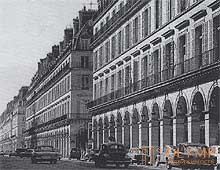 It is not by chance that the historian of artistic styles V. Kurbatov emphasized that “the appearance of the Empire style was not an upheaval in the consistent development of French styles, but a modification of the same classical elements that were known in France since the time of Louis XIV or even Francis I.” It is also noteworthy that the leading role in the formation of the new style did not belong to the architect, as usual, but to the painter J.-L. To David. Even on the eve of the revolution, this artist in the paintings The Oath of the Horatii (1784), Brutus (1789) glorified heroic episodes from the history of Republican Rome, based on the books of Titus Libya. To work on these paintings, David ordered the well-known Parisian furniture maker J. Jacob to furnish objects according to his own drawings made by him from Etruscan vases, found in the excavations of Herculaneum and Pompeii in Italy. David participated in the first French revolution, then, having gone through a severe crisis, began to glorify the emperor Napoleon just as before - the ideals of freedom of the Roman republic.
It is not by chance that the historian of artistic styles V. Kurbatov emphasized that “the appearance of the Empire style was not an upheaval in the consistent development of French styles, but a modification of the same classical elements that were known in France since the time of Louis XIV or even Francis I.” It is also noteworthy that the leading role in the formation of the new style did not belong to the architect, as usual, but to the painter J.-L. To David. Even on the eve of the revolution, this artist in the paintings The Oath of the Horatii (1784), Brutus (1789) glorified heroic episodes from the history of Republican Rome, based on the books of Titus Libya. To work on these paintings, David ordered the well-known Parisian furniture maker J. Jacob to furnish objects according to his own drawings made by him from Etruscan vases, found in the excavations of Herculaneum and Pompeii in Italy. David participated in the first French revolution, then, having gone through a severe crisis, began to glorify the emperor Napoleon just as before - the ideals of freedom of the Roman republic.
About the artist said then that in search of his hero, he "changed Caesar to Brutus." The fame of the artist turned him into the first painter of the Empire. David developed sketches of furniture, interior design, dictated fashion in clothes. In 1800, he painted a portrait of the famous Parisian beauty Madame Recamier in a tunic in the antique style, reclining on a couch with a gently curved headboard, made by Jacob, and standing next to a floor lamp in the Pompeian style. With David's light hand, this picture marked the beginning of fashion for the style of recamie. In 1802, a similar portrait of Madame Recamier, as if competing with David, was written by his pupil F. Gerard. But the emperor himself wanted more pomp and grandeur. His court architects were S. Persier and P. Fontaine, previously, in 1786-1792, who studied in Italy, in Rome. In France, they designed the interiors of the palaces of Malmaison, Fontainebleau, Compiens, Louvre, Medon, Saint-Cloud, Versailles, Tuileries, built the Arc de Triomphe on the Carousel Square in Paris, like the Romans (1806-1808). In 1806-1836 another Arc de Triomphe was built by the project of J.-F. Shalgren. Sculptor A.-D. Shode hoisted the statue of Bonaparte in the image of Caesar in the Roman toga to the top of the Vendome column, another statue, also the work of Shode, the emperor carried in a wagon train to Moscow to install it in the conquered city. 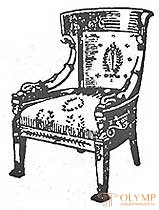 But it is noteworthy that relatively few outstanding works of architecture, sculpture and painting were created in the Empire style.
But it is noteworthy that relatively few outstanding works of architecture, sculpture and painting were created in the Empire style.
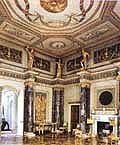 And his rival J. Dufour produced “picture wallpapers” on mythological themes with “Italian landscapes and antique figures”.
And his rival J. Dufour produced “picture wallpapers” on mythological themes with “Italian landscapes and antique figures”. At the beginning of the XIX century, this connection became even more solid and ideologically substantiated, since the art forms of the Egyptian empire of the time of Ramses and the ancient Roman emperors were united in the artistic ambitions of the French usurper. They coexisted integrally and organically in a single “space” of romantic thinking. Empire style in France, the beginning of the XIX century. uniquely continues the tradition of artistic Romanticism, which began in the middle of the previous century by Neo-Gothic in England. Empire continued to turn to history, deepening into the past - not only in antiquity, but also in ancient Egypt. However, on the methodological side, the Empire style is normative and, therefore, unromantic. Therefore, the evolution of artistic styles in the art of France - from Rococo, through Neoclassicism, to the Empire, too much resembles, as it were, in the reverse order, the development that took place in Italy of the XVI century: from the Renaissance Classicism to Mannerism and Baroque. The combination of “Roman” and “Egyptian” motifs, mahogany and gilded bronze, as well as patinated, matte-black bronze associated with the basalts of Egypt, characteristic of Empire, can be seen in the works of the famous Parisian bronze artist P.-F. Tomira and his workshop. Since 1805, Tomir was Bonaparte's “court chaser”, he made bronze furniture parts, lamps - sconces, candelabra, tripods, vases and watch cases. In all the products, the empire decoration from authentic Classicism is distinct. 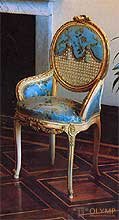 In the classic style, the volumetric shape and decor are connected plastic, movable; they transform into each other, changing the mutual arrangement and functions in the overall composition. In Empire style, the composition is built on the contrast of the clean field of the surface of the wall, furniture, vessel and narrow ornamental belts, in strictly designated areas, as a rule, emphasizing the design nodes and form divisions. This contrast is further enhanced by the unusual density of the ornament and the contrasts of color.
In the classic style, the volumetric shape and decor are connected plastic, movable; they transform into each other, changing the mutual arrangement and functions in the overall composition. In Empire style, the composition is built on the contrast of the clean field of the surface of the wall, furniture, vessel and narrow ornamental belts, in strictly designated areas, as a rule, emphasizing the design nodes and form divisions. This contrast is further enhanced by the unusual density of the ornament and the contrasts of color.
For Classicism, soft and complex colorful harmonies are typical; for Empire, bright, eye red, blue, white - the colors of the Napoleonic flag! The walls were covered with bright silk, in the ornaments - circles, ovals, rhombuses, lush borders of oak branches, Napoleon's bees and stars of gold and silver brocade on scarlet, crimson, blue or green background (Fig. 211, 216, 217). Thus, the main categories of shaping in the art of Empire style were historicism, normativity, rationalism, decorativeness, tectonicity, in later forms - open eclecticism. In the famous Parisian mansion, built in 1804-1806, for the stepson Napoleon, Prince E. Beauharnais and his sisters Hortense, the interiors are decorated in a variety of styles, there are combined "Pompeian", Egyptian, Roman and even "Turkish" motifs that creates a general “sybaritic character of the empire interior”. And in his Turkish boudoir, “Napoleonic Orientalism comes almost to kitsch ... this is how aesthetics of historicism and eclecticism arise under the influence of early romanticistic currents.” Perhaps it was these destructive tendencies, regardless of the political defeat of Napoleon, that led to the imminent transformation of the Empire into the “style of Charles X”, which opened the period of Historicism itself as the era of “re-creation”
Another characteristic feature of the Empire is characteristic: its inherent regulability almost completely excluded the emergence of regional movements and schools. That is why the Empire style correctly calls only the art of France in the beginning of the XIX century, but in its essence, the Empire style is not national, but cosmopolitan (not international, as, for example, Gothic, but irreconcilable to folk traditions). Being an expression of Napoleon Bonaparte's imperial claims to world domination, this style was forcibly implanted on the alien ground of the conquered countries. It is noteworthy that none of the countries defeated by Napoleon, in essence, adopted this style. In Germany and Austria, Biedermeier style became a kind of artistic opposition to the Napoleonic invasion, although it used partly empire forms. And only one winning country — Russia voluntarily adopted the “Empire style”. There were internal reasons for this: Russia was becoming a powerful empire. Even before the start of the Patriotic War of 1812, architects Persier and Fontaine, with the permission of Napoleon, through the French ambassador in St. Petersburg, sent Russian Emperor Alexander I albums with views of "all the wonderful things that were built in Paris." The Russian aristocracy imitated the mores of the Parisian Salons, as it were, capitulating before the usurper in advance. So strong was the hypnosis of French fashion. Napoleon himself sent Alexander descriptions of his Italian and Egyptian campaigns with engravings. This relationship was interrupted by the war. But already in 1814 in Paris, Emperor Alexander met with P. Fontaine and, even before the secondary entry of the Allied armies, received thirteen albums with drawings in pen and watercolors — designs for interior design and furniture. These albums have played a significant role in spreading the style of the “Russian (St. Petersburg) Empire style”. In France, they were published only in 1892. Persier and Fontaine, after the defeat of the French Empire, themselves sought the Russian service, but Alexander preferred them to O. Montferrand, then unknown to anyone, the future creator of the grandiose St. Isaac's Cathedral in St. Petersburg.
In England, Empire style is also not widespread. "English Empire" is sometimes conditionally called the "George IV style" (1820-1830), which came after the "English regency style" or "Rigency". The time of the second "British Empire" is the Victorian era of the 1830-1890s. Another, rarer name of the Empire is the non-Roman style. In the period of the Second Empire in France, the years of the reign of Emperor Napoleon III (1852–1870), the pompous and eclectic style developed, somewhat ironically called the Second Ampir. The Bonaparte dynasty retained its emblem - golden bees on a blue background (unlike the Bourbon lilies), they were used by the Empire artists as a decorative motif, but had not Roman or Egyptian, but Frankish origin, and ascended to the era of the Merovingians.
Что бы оставить комментарий войдите
Комментарии (0)